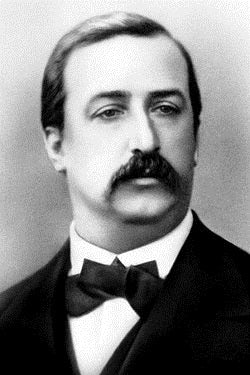 Alexander Borodin was a Russian composer during the Romantic era. As a doctor, chemist, women’s rights advocate, and composer, he was a multifaceted individual. He studied chemistry at the Medical-Surgical Academy in St. Petersburg, and later took a job as a chemistry professor. Later in his career of advocacy, he established medical courses for women and founded the School of Medicine for Women.
Alexander Borodin was a Russian composer during the Romantic era. As a doctor, chemist, women’s rights advocate, and composer, he was a multifaceted individual. He studied chemistry at the Medical-Surgical Academy in St. Petersburg, and later took a job as a chemistry professor. Later in his career of advocacy, he established medical courses for women and founded the School of Medicine for Women.
He began his hobby of composing in his teens, and played the piano and taught himself the cello. Upon starting formal composition studies, he became part of the Mighty Five, a group of five Russian composers consisting of his teacher Mily Balakirev, Cesar Cui, Modest Mussorgsky, Nikolai Rimsky-Korsakov, and himself. The Mighty Five sought to create a unique Russian form of classical music, instead of assimilating with the standard Western European style.
Throughout his career as a composer, he completed two symphonies, leaving a third unfinished at the time of his death. Alexander Glazunov, another Russian composer, completed and orchestrated the remaining two movements. He did not get a chance to complete his opera, Prince Igor, either, and Glazunov and a fellow member of the Mighty Five, Nikolai Rimsky-Korsakov, completed the opera after Borodin’s death. He composed many chamber works as well, his best-known being his two string quartets.
The two quartets are polar opposites in terms of mood expression: the first one has many rich, powerful changes in mood, whereas the second quartet exhibits a more uniform expression throughout its four movements. Because of this, the second quartet has shown more popularity than the first. The first movement of Quartet No. 2 is marked Allegro moderato and opens with a lyrical theme in the cello’s upper register, which is not surprising, since Borodin was a cellist. Unlike most string quartets, Borodin wrote the second movement as a scherzo and the third as a slower nocturne, rather than the other way around. The third movement is perhaps the most well-known movement of the piece, and, like the first movement, begins with a lyrical high-register melody in the cello. The fourth movement, the finale, displays Borodin’s mastery of counterpoint, juxtaposing numerous themes against each other. Included is a performance of the quartet by the Borodin String Quartet, named for the composer.



Leave a comment